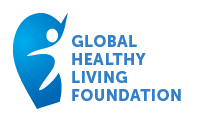UPPER NYACK, N.Y.--(BUSINESS WIRE) — ArthritisPower, leading arthritis patient registry, expands to PatientSpot, an omni-disease app as Class 1 FDA Medical Device.
HIGH CHOLESTEROL
HIGH CHOLESTEROL
July 17, 2017
GHLF STAFF

Cholesterol, a waxy fat-like substance in your blood that is made by the liver, is essential to help your body build healthy cells. Too much cholesterol, however, can be dangerous and can increase your risk of heart disease, the number one killer of men and women in the U.S. In fact, high cholesterol is one of the main risk factors for heart disease – the higher your cholesterol, the greater your risk. Excess cholesterol can build up in the walls of your arteries, making it harder for the blood to flow through these blood vessels. When this happens, your heart may not get enough oxygen-rich blood, increasing your risk of heart attack and stroke (as blood flow to the brain is also decreased).
Your doctor can determine your cholesterol level with a blood test that measures the total milligrams of cholesterol per deciliter of blood (mg/dL). There are different types of cholesterol, and typically you will see each of these in your test results:
- LDL (bad) cholesterol is the main source of cholesterol buildup and blockage in the arteries. A level of LDL of 100 or less is optimal; 130 to 159 is borderline high, 160 to 189 is high, and 190 or above is very high.
- HDL (good) cholesterol acts like a cleaner, helping to remove bad cholesterol from your arteries and protect against heart disease; thus, higher HDL numbers are desirable. An HDL level of less than 40 is low and is considered a major risk factor for heart disease, while levels of 60 or more are desirable.
- Triglycerides is another form of fat in your blood that can raise your risk for heart disease. Levels that are borderline high (150-199) or high (200 or more) may require treatment. People with a high triglyceride level often also have high total cholesterol.
- Total cholesterol represents the total amount of cholesterol in your blood. It’s calculated by adding your HDL and LDL cholesterol levels along with 20 percent of your triglyceride level. A total cholesterol level of 200 or less is ideal; 240 and above is considered high.
The numbers of greatest concern to your doctor are your LDL and total cholesterol. If these are borderline or high, your doctor may recommend treatment.
Causes
High cholesterol is caused by some factors that you can control, and some you that you cannot. High cholesterol can be inherited, but more often it’s caused by unhealthy lifestyle choices – poor diet and exercise habits, and being overweight. Following are some of the most common risk factors for high cholesterol:
- Diet. Saturated fat and cholesterol in foods such as animal products (red meat, full-fat dairy products), egg yolks and some sweets can raise cholesterol levels.
- Weight. Being overweight, with a body mass index (BMI) of 30 or greater puts you at risk of high cholesterol. Losing weight can help lower your LDL and total cholesterol levels, as well as raise your good (HDL) cholesterol levels.
- Large waist circumference. Men with a waist circumference of at least 40 inches and women with a waist circumference of at least 35 inches are at increased risk.
- Lack of exercise. Exercise helps raise HDL cholesterol and lower LDL cholesterol as well as working to keep you at a healthy weight.
- Smoking. Cigarette smoking can lower good HDL cholesterol and it damages the walls of your blood vessels, making it easier for fatty deposits to build up and block them.
- Age. Cholesterol levels tend to rise as you get older, particularly among women after menopause.
- Diabetes. If you have diabetes, high blood sugar can raise LDL levels and lower HDL, as well as damage the lining of the arteries.
- High blood pressure. If you’ve been told your blood pressure is high, you’re at greater risk for high cholesterol and heart disease.
Symptoms
Having high cholesterol in and of itself does not cause any symptoms, so many people don’t know their levels are too high. That’s why it’s important to have your cholesterol tested at least once every four to six years. Rare lipid disorders, which tend to run in families and cause very high cholesterol levels, may sometimes cause symptoms such as bumps in the skin, hands or feet, as a result of deposits of cholesterol and other fats.
Treatment
High cholesterol can sometimes be managed through lifestyle changes alone. The “TLC Diet” is a low-saturated-fat, low-cholesterol diet that calls for less than seven percent of calories from saturated fat and less than 200mg of dietary cholesterol daily, with only enough calories to maintain a desirable weight and avoid weight gain. Following the TLC means eating a variety of healthy foods, including fruits, vegetables, whole grains, low-fat dairy products, fish, poultry without the skin (not fried) and lean meats in moderation.
Adding soluble fiber to the diet (found in oatmeal and beans, among other sources) is sometimes recommended if LDL cholesterol is not lowered sufficiently from the TLC diet alone. Additional lifestyle changes include losing weight if you’re overweight, quitting smoking and exercising regularly (at least 30 minutes daily). Supplements that may help lower cholesterol include niacin, which blocks the liver from removing HDL cholesterol and lowers triglycerides, and omega-3 fatty acids (found in fish and flax seed oils), which raise HDL levels and lower triglycerides.
Medication for High Cholesterol
There are several types of cholesterol-lowering medications available. However, even if you are taking one of these medicines it’s important to continue maintaining your lifestyle changes as part of your treatment plan to help lower your total and LDL cholesterol and keep the medication dose as low as possible. Medications include:
- Statins, such asatorvastatin (Lipitor®), fluvastatin (Lescol®, Lescol® XL), lovastatin (Mevacor®, Altoprev®), pravastatin (Pravachol®), rosuvastatin (Crestor®), and simvastatin (Zocor®), block the liver from making cholesterol. These drugs are very effective in lowering LDL cholesterol and are safe for most people.
- Bile acid sequestrants, which decrease the amount of fat absorbed from the food you eat, also lower LDL and can be used alone or in combination with statins. These include cholestyramine (Questran®), Prevalite®), colestipol (Colestid®) and colesevelam (Welchol®).
- Cholesterol absorption inhibitors, such as Ezetimibe (Zetia®) decrease the amount of cholesterol absorbed from food, lower LDL and lower triglycerides.
- Fibric acid derivatives or fibrates, including Lopid® (gemfibrozil), Trilipix® (fenofibric acid) and Fibricor® (fenofibric acid) are mainly used to treat high triglyceride and low HDL levels.
Diet
Diet plays a large role in helping reduce high cholesterol. It’s important to choose foods that are low in saturated fat, such as fat-free or low-fat dairy products, lean meats, fish, poultry without the skin, whole grains, and fruits and vegetables. Avoid any processed foods that have trans fats (typically listed on the label as partially-hydrogenated oils), and minimize or eliminate junk and fast foods. Look for margarines or other plant-based butter substitutes that are low in saturated fat, and avoid or limit foods that are high in cholesterol like liver and other organ meats, egg yolks, red meat and full-fat dairy products. Increasing the amount of soluble fiber in your diet can also help lower cholesterol. Foods high in soluble fiber include oats/oatmeal, oranges, pears, vegetables, dried peas and beans. Foods high in omega-3 fatty acids can raise “good” HDL levels, including oily fish like salmon, mackerel and herring, walnuts, almonds and flax seeds. Whey protein, one of two protein types found in dairy products, has been shown to lower both LDL and total cholesterol. A wide variety of whey protein powders, which you drink after mixing with water, low- or non-fat milk or juice, are available.
SUBSCRIBE TO GHLF
RELATED POST AND PAGES
_
Was this article helpful?
YesNo


